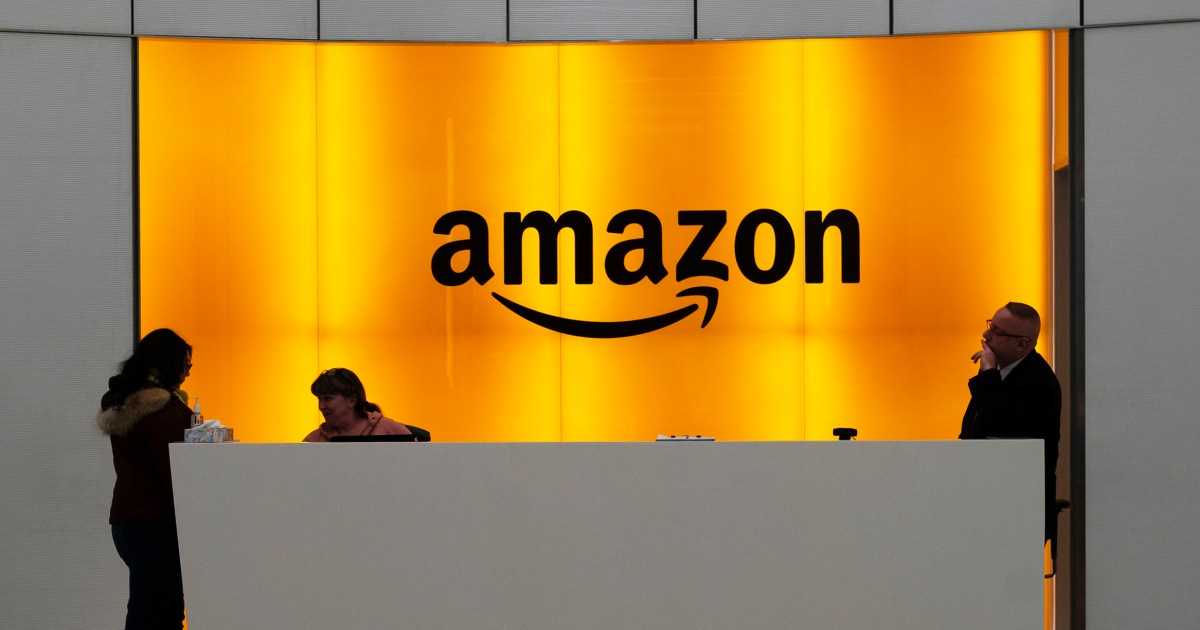Some of the largest companies in America have begun capping or reducing their head counts, blaming the promise of productivity with artificial intelligence for their decisions.
Yet, so far, there is uneven evidence that the promised cost-savings from AI are actually worth what companies are putting into it.
This leaves some experts questioning whether AI could be serving as a fig leaf for companies that are laying off employees for old-fashioned reasons, such as financial underperformance or global economic uncertainty.
“It’s much easier for a company to say, ‘We are laying workers off because we’re realizing AI-related efficiencies’ than to say ‘We’re laying people off because we’re not that profitable or bloated, or facing a slowing economic environment, etc,’” David Autor, a professor of economics at the Massachusetts Institute of Technology, wrote in an email to NBC News.
“Whether or not AI were the reason, you’d be wise to attribute the credit/blame to AI,” wrote Autor, an expert on AI’s impact on workers.

This week, Amazon announced it had begun a reorganization that would result in the elimination of 14,000 roles — and said AI was a leading cause.
“The world is changing quickly,” Amazon Senior Vice President Beth Galetti wrote Tuesday. “This generation of AI is the most transformative technology we’ve seen since the Internet, and it’s enabling companies to innovate much faster than ever before.”
Yet a few hours later, a different Amazon representative tried to downplay the role that AI played in the layoff decisions.
“AI is not the reason behind the vast majority of reductions,” said the representative, who requested anonymity because she was not authorized to give her name.
“Last year, we set out to strengthen our culture and teams by reducing layers,” among other measures, she said. “The reductions we’re sharing today are a continuation of this work.”
The representative declined to comment on the apparent mismatch between this second statement about AI and Amazon’s earlier comments.
But that disparity — coming from a company as large and disciplined as Amazon — highlights how difficult it can be for the public to verify what companies say about AI and its role in personnel decisions.
AI’s elusive returns
Amazon joins plenty of other companies in justifying recent job cuts by pointing to AI.
Walmart recently signaled that it intends to keep headcount flat over the next several years, largely as a result of AI.
Goldman Sachs announced a fresh round of layoffs this month, saying it planned to reduce human roles that AI could potentially perform.
Salesforce recently reduced its workforce by 4,000, citing “the benefits and efficiencies” of AI.
One might think that these companies were all seeing huge benefits from AI, the kind of returns that would make these difficult — and expensive — layoffs worthwhile.
Indeed, the number of companies that report being focused on AI’s return on investment has surged in recent months, according to data from AlphaSense, an AI research firm.
So where, exactly, are all these benefits? That’s where it gets tricky.
Recent studies have found significant limits on the productivity of AI, at least in its current manifestation.
Out of 1,250 firms surveyed by Boston Consulting Group for a September report, 60% said they had seen “minimal revenue and cost gains despite substantial investment” in AI.
Only 10% of the organizations involved in a similar Deloitte survey said they were getting “significant return on investment from agentic AI,” or systems that can make decisions beyond simply following prompts.
Nonetheless, more large American companies than ever are using, investing in and measuring the business impact of generative AI, according to a new report from UPenn’s Wharton School and GBK Collective.
But like the other surveys, the Wharton report shows mixed results. “It’s great if you can shave 20 minutes off an email or half an hour reading a report. But that’s not going to leapfrog anything,” said Stefano Puntoni, faculty co-director of Human-AI Research at Wharton and an author of the study.

Performance issues?
Many of the same companies that are making layoff announcements while touting AI investments have also been under increased financial pressure.
Amazon’s layoffs announcement comes ahead of its third quarter earnings results, set to be released Thursday.
While analysts expect improvement, there is growing concern about increased competition for Amazon’s AWS cloud platform from AI. After hitting an all-time high in January, shares of Amazon have been largely flat this year and are about 6% below that record.
Meanwhile, Salesforce shares are down about 29% from a December 2024 high. Some analysts have questioned whether implementing more AI will be enough to stave off the threat posed by AI to Salesforce’s core product lineup.
“No matter what the current state of the company, the narrative is negative and just about impossible to disprove,” wrote Jackson Ader, an analyst with KeyBanc Capital financial group.
Some of the companies enacting job cuts are simply looking to rein in spending — including firms at the core of the AI boom.
Last week, Facebook-parent Meta announced it was cutting 600 roles in its AI unit over concerns that it had become “bloated.”
Rival Microsoft has announced three separate rounds of layoffs this year, and says it is looking to cut costs elsewhere in the company in order to pay for its massive AI investments.
Yet even firms far from Silicon Valley are getting swept up.
UPS said Tuesday it had eliminated 34,000 roles from its operational division, which includes drivers and package handlers — a 70% increase from its previous target. UPS also plans to reduce its reliance on seasonal hires and significantly cut back on vehicle leases.
These changes are “powered by automation,” the company said — corporate shorthand for AI.
UPS is “freeing up our network to grow in the best parts of the market,” a spokesperson said. “AI and robotics help to make jobs safer, while also reducing repetitive tasks.”

